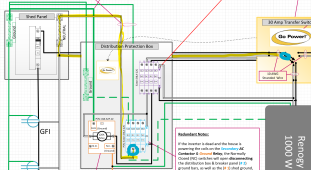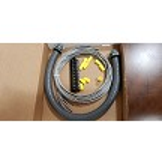justanothercoder
New Member
- Joined
- May 13, 2022
- Messages
- 4
I just purchased a Delta Pro. My (hopeful) use case is to use it as a UPS/down grid backup, with AC charging It is connected to a Reliant ProTran 2 Transfer Switch via the 30A RV connector with an adapter. I have used the transfer switch many times with a gas powered generator.
When I plugged the Delta Pro in I ran into a couple of issues that I'm hoping someone can help with:
1) Charging with a GFCI outlet immediately tripped GFCI.
2) After adding a 2 prong/3 prong adapter to the AC charging cable, it did charge.. however:
3) When I attempted to power the transfer switch while charging from AC (in grid position, have not tried gen position), the GFCI tripped again.
Based on some reading, I have ordered one of these(
But I am wondering if i am doing it right.
Any help is appreciated
Thanks!
--Brendan
When I plugged the Delta Pro in I ran into a couple of issues that I'm hoping someone can help with:
1) Charging with a GFCI outlet immediately tripped GFCI.
2) After adding a 2 prong/3 prong adapter to the AC charging cable, it did charge.. however:
3) When I attempted to power the transfer switch while charging from AC (in grid position, have not tried gen position), the GFCI tripped again.
Based on some reading, I have ordered one of these(
Neutral-Ground Bonding Plug
): https://www.amazon.com/dp/B07F4R7BDL?psc=1&ref=ppx_yo2ov_dt_b_product_detailsBut I am wondering if i am doing it right.
Any help is appreciated
Thanks!
--Brendan





